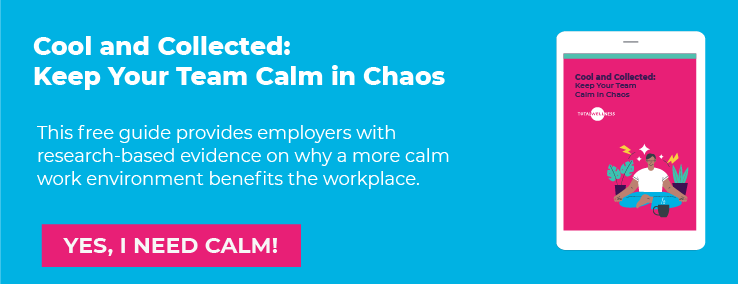 As we navigate the ever-evolving landscape of the modern workplace, one aspect remains constant: the need for connection. It's a fundamental human desire, and it's as vital in our professional lives as it is in our personal ones.
As we navigate the ever-evolving landscape of the modern workplace, one aspect remains constant: the need for connection. It's a fundamental human desire, and it's as vital in our professional lives as it is in our personal ones.
Employee Resource Groups (ERGs) are emerging as a powerful tool to foster this connection, enhancing wellbeing and creating a more inclusive, engaged workforce.
Now, if you're scratching your head wondering what on earth an ERG is, don't fret. ERGs have become a hot topic in recent years, revolutionizing the way companies approach diversity, inclusion, and employee engagement.
Alright, buckle up as we dive into the details of ERGs and how they're shaking up the modern workplace. These groups are no fleeting fad; they pack a punch when it comes to making positive changes within organizations.
What are Employee Resource Groups?
ERGs, also known as affinity groups or business network groups, are employee-led groups formed around shared characteristics or life experiences. These can include race, gender, age, sexual orientation, disability, and more. ERGs provide a safe space for employees to connect, share experiences, and support each other.
Think of an ERG as a club within your company, but with a twist. They're like your favorite book club, but instead of discussing the latest bestseller, you're promoting inclusivity, diversity, and mutual understanding.
The Connection to Wellbeing
Now, you might be wondering, "How do ERGs relate to wellbeing?" The answer lies in the sense of belonging that these groups foster. When employees feel seen, heard, and valued, it positively impacts their mental and emotional wellbeing. This sense of belonging can reduce stress, increase job satisfaction, and improve overall health.
ERGs come in all shapes and sizes, each tailored to address specific needs or interests. You might find a Women's Network ERG, focusing on empowering female employees, or a Veterans Group, providing resources and support for those who've served in the military. There could be an ERG for LGBTQ+ employees, one for employees with disabilities, or even one for the environmentally conscious. The possibilities are as diverse as your workforce!
The Power of ERGs
Now, you might be thinking, "Sounds nice, but what's the big deal?"
ERGs go far beyond being a mere luxury or optional addition to the workplace.
Despite the increasing connectivity between workers and their colleagues, a significant majority of employees worldwide have experienced feelings of loneliness in the workplace, as revealed by EY's second annual Belonging Barometer 2.0 report. The survey, which encompassed over 5,000 workers in Brazil, China, Germany, the UK, and the US, discovered that an astonishing 82 percent of respondents have felt lonely at work.
A staggering 46 percent of workers expressed a likelihood of leaving their job due to feelings of loneliness. This sentiment was particularly prevalent among the younger generations, with 54 percent of Generation Z and 52 percent of Millennials indicating a potential departure from their employer if they experienced loneliness. Similarly, 42 percent of Generation X and 31 percent of Baby Boomers shared the same inclination. These findings emphasize the significant impact that loneliness can have on employee retention and highlight the importance of addressing this issue through initiatives like ERGs.
The Impact of ERGs on Employee Engagement
ERGs are not just beneficial for individual wellbeing; they also have a significant impact on employee engagement. When employees feel connected to their colleagues and their organization, they are more likely to be engaged in their work. This engagement can lead to increased productivity, innovation, and retention.
Research from McKinsey provides further insight. The study found that employees who rated their ERGs as effective experienced a significantly higher sense of belonging and inclusion than those who found their ERGs less effective.
Implementing ERGs in Your Organization
If you're considering implementing ERGs in your organization, here are a few practical steps to get you started:
- Identify the Needs: Start by identifying the needs of your employees. What groups would benefit from an ERG? This could be based on feedback from employees, diversity data, or industry trends.
- Establish a Structure: Once you've identified the needs, establish a structure for your ERGs. This could include a charter, leadership roles, and regular meeting times.
- Provide Support: ERGs need support to thrive. This could include resources, budget, and executive sponsorship.
- Promote Participation: Encourage all employees to participate in ERGs. This can help to foster a culture of inclusivity and connection.
The Future of ERGs and Wellbeing
As we look to the future, the role of ERGs in promoting wellbeing is likely to become even more significant. With the rise of remote work, fostering connection and belonging is more important than ever. ERGs can provide a virtual space for employees to connect, share experiences, and support each other, regardless of their physical location.
ERGs are a powerful tool for fostering connection and promoting wellbeing in the workplace. They provide a space for employees to share experiences, support each other, and feel valued. By implementing ERGs in your organization, you can enhance wellbeing, boost employee engagement, and create a more inclusive workplace.
Remember, the power of connection is not to be underestimated. It's a fundamental human need, and when we meet this need in the workplace, the benefits are profound. So, let's harness the power of ERGs and create workplaces where everyone feels seen, heard, and valued.
We are eager to hear from you if your organization currently has Employee Resource Groups! Share your experiences in the comment section below.



